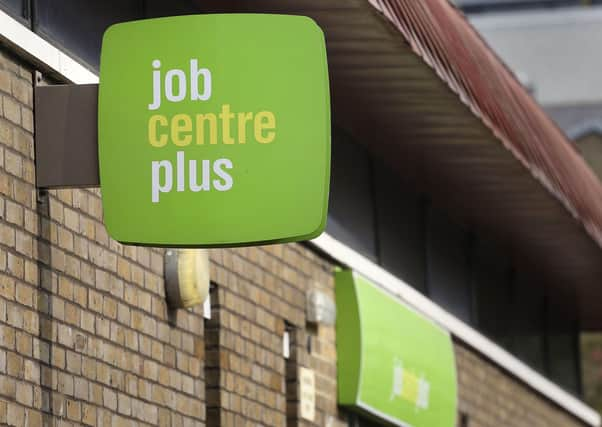Employment in Northern Ireland is heading back to pre Covid levels but not there yet


For the most recent recession the crucial benchmark is pre-pandemic levels of activity and rates of employment etc.
The latest batch of labour market statistics from Northern Ireland Statistics and Research Agency (NISRA) highlights further improvements on the road to recovery.
Advertisement
Hide AdAdvertisement
Hide AdBut in response to the question ‘are we there yet?’ as far as the labour market recovery is concerned, the answer is both yes and no.


It all depends what aspect of the labour market you focus on.
For example, Northern Ireland’s economic inactivity rate (25.9%) has returned to pre-pandemic (fourth quarter 2019) levels but the employment (71.1%) and unemployment rates (3.8%) have not.
The most closely watched monthly labour market statistic is the HMRC PAYE payrolls data. This is a timely indicator of how many employees are on employers’ payrolls.
Advertisement
Hide AdAdvertisement
Hide AdAs lockdown restrictions have eased there has been a marked increase in employee numbers.
Indeed, June’s figures eclipsed the pre-pandemic payrolls high that occurred in February 2020.
July witnessed the largest monthly jump in payrolls (+7,927 or +1.1%) since the series began, taking the total number of employees to 762,596 — a fresh record high. That is up 27,000 employees from November 2020’s pandemic low and 9,600 (+1.3%) above February 2020’s pre-pandemic high.
So are we there yet?
As far as payrolls data is concerned it is a resounding yes and some! However, there is a statistical wrinkle here that inflates the true measure of employment and the amount of work being undertaken.
Advertisement
Hide AdAdvertisement
Hide AdThe payrolls data includes staff who have been furloughed (ie availing of the Job Retention Scheme) but many of whom are still doing no work whatsoever. As of the end of June there were 44,000 employees on furlough.
The current figure will be even lower as the scheme nears its September expiry date and more employees return to work as lockdown restrictions ease. Nevertheless a proportion of these employees will ultimately move into unemployment/economic inactivity. How many remains to be seen.
The encouraging news that the number of payrolled employees has never been higher is tempered by dismal news on the self-employment front. The number of self-employed fell to 91,000 in Q2 2021 — a 22-1/2-year low.
That’s down 46,000 or 34% relative to pre-pandemic levels.
Many self-employed have switched status or jobs and become employees. However, overall employment (employees and self-employed) in Q2 2021 remained 3.0% below pre-pandemic levels which equates to 26,000 fewer individuals in work.
Advertisement
Hide AdAdvertisement
Hide AdThe self-employment and furlough issues also explain why the total number of hours worked in Northern Ireland is still recovering but not yet recovered. In Q2 2021 the total number of hours worked in Northern Ireland was 5.5% below Q4 2019 levels (pre-pandemic).
That means just over two-thirds of the decline in total hours worked following the pandemic has been recovered so far. Only when this statistic returns to pre-pandemic levels can we be more authoritative that the labour market has truly recovered in a meaningful way.
• Richard Ramsey is Ulster Bank chief economist
——— ———
A message from the Editor:
Thank you for reading this story on our website. While I have your attention, I also have an important request to make of you.
With the coronavirus lockdown having a major impact on many of our advertisers — and consequently the revenue we receive — we are more reliant than ever on you taking out a digital subscription.
Advertisement
Hide AdAdvertisement
Hide AdSubscribe to newsletter.co.uk and enjoy unlimited access to the best Northern Ireland and UK news and information online and on our app. With a digital subscription, you can read more than 5 articles, see fewer ads, enjoy faster load times, and get access to exclusive newsletters and content. Visit https://www.newsletter.co.uk/subscriptions now to sign up.
Our journalism costs money and we rely on advertising, print and digital revenues to help to support them. By supporting us, we are able to support you in providing trusted, fact-checked content for this website.
Ben Lowry
Acting Editor